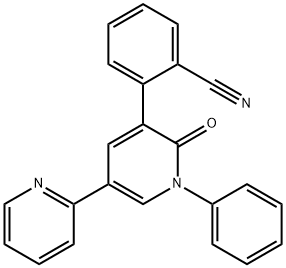In October 2012, the US FDA approved perampanel for the treatment of partial onset seizures in epileptic patients who are at least 12 years old. Perampanel is the first AMPA receptor antagonist to receive FDA approval as an AED. AMPA glutamate receptors are found primarily on postsynaptic neurons in the brain. As a selective, noncompetitive antagonist of AMPA, parampanel prevents ion channel opening and reduces propagation of action potential. Parampanel was discovered through lead optimization of a commercially available compound, 2,4-diphenyl-4H-[1,3,4]oxadiazin-5-one, which was identified by high-throughput screening of a compound collection employing a rat cortical neuron AMPA-induced cell-death assay. Modifications of aromatic rings at positions 1, 3, and 5 while changing the core to pyridone led to parampanel which inhibited AMPA-induced calcium influx (IC50=60 nM). Parampanel had a minimum effective oral dose of 2 mg/kg in an AMPA-induced mouse seizure model. The synthesis of parampanel was accomplished via a 6-step route utilizing Suzuki–Miyaura couplings and modified Ullmann reactions for incorporation of aryl groups.

